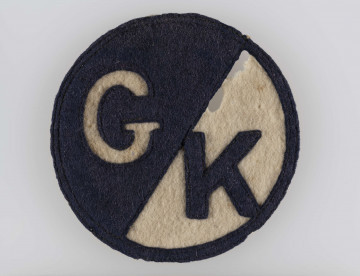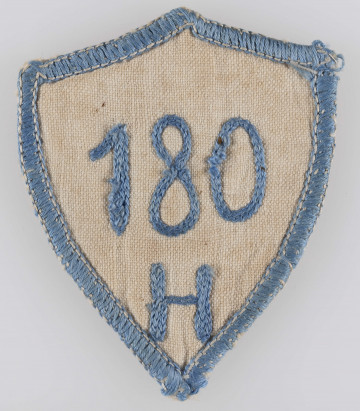
School shield
1930 — 1939
National Museum in Lublin
Part of the collection: Education and scouting in Lublin
When Poland regained its independence in 1918, general education was n a state of neglect. At the turn of 1917 and 1918, only half of the children in Lublin attended the twenty-four elementary schools operating there. Most of the institutions did not have their own seats and occupied small rooms rented in places unsuitable for educational purposes.
The first reforms aimed at improving the education of young people in Poland were made as early as February 1919, when the decree on compulsory education was passed, establishing the compulsory education of children aged seven to fourteen and creating a seven-year education process. Contrary to what one might think, this complicated the situation in Lublin because the city had to obtain funds for the construction of buildings and payment for teaching staff. In the analysed period, there were 2,340 elementary schools in the Lubelskie Voivodeship, with 167,300 students and 2,870 teachers. However, up to 95 % of these institutions offered only one- or two-class education. Fewer than a hundred schools provided seven years of education.
Over the next few years, thanks to the involvement of the general population, the situation improved significantly. Facilities were established in almost every town in the region as well as in many villages. Further reforms defined the obligations of the state and local governments towards the maintenance of schools and made the organisational level of a given institution dependent on the number of students. Each commune had to have at least one seven-class school.
Ten years after independence was regained, more than 275,000 children attended 2023 public schools in the Lublin region; there were 5,484 teachers, and 35 % of students attended seven-grade schools.
In 1932, a new law on the education system was passed – the seven-year compulsory schooling was maintained, but the facilities were divided into three levels. Only the third-level school implemented the full curriculum.
Schools with one teacher prevailed in the Lublin region until the end of the Second Polish Republic. Over 400 000 students in approximately 2,300 primary schools started the last school year before World War II, including approximately 33 % in third-level schools. In 1939, in Lublin alone, there were 45 elementary schools, where practically all the youth from the city studied.
Author / creator
Dimensions
cały obiekt: height: 5,4 cm, width: 6 cm
Object type
badge
Technique
embroidery
Material
canvas, thread
Creation time / dating
Creation / finding place
Owner
The National Museum in Lublin
Identification number
Location / status

1930 — 1939
National Museum in Lublin

1918 — 1939
National Museum in Lublin

1918 — 1939
National Museum in Lublin
DISCOVER this TOPIC
Castle Museum in Łańcut
DISCOVER this PATH
Educational path